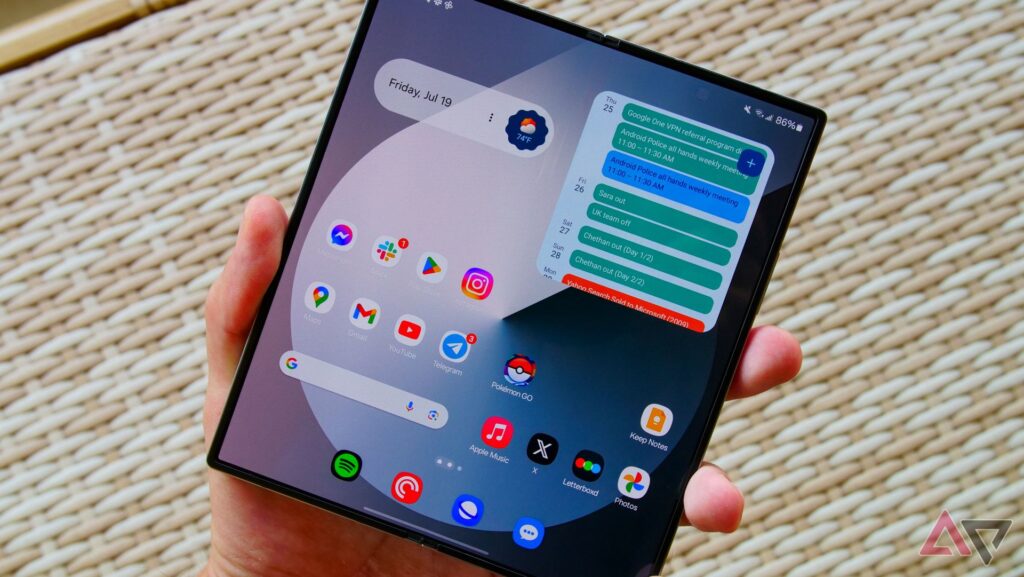
SEOUL – Samsung’s latest foldable phone, the Galaxy Fold Ultra, has sparked debate over its design focus, raising questions about its market strategy.
Immediate Impact
The tech giant recently teased the Galaxy Fold Ultra, highlighting its larger display and enhanced camera system. However, industry observers are questioning whether these features address the core issues that have limited the adoption of foldable phones.
Key Details Emerge
Samsung’s decision to prioritize a larger screen and improved cameras seems to respond to vocal enthusiasts dissatisfied with previous models’ specifications. Yet, critics argue that these enhancements might not be the solution to increasing sales.
Many believe that the high price and usability challenges of foldables, rather than display size or camera quality, are the main barriers to wider adoption.
Focus on the Wrong Features?
Some users have expressed disappointment with the emphasis on screen size and camera upgrades. While overseas models boast expansive displays, the practical benefits of such features remain under scrutiny.
One user noted, “I barely use the extra space on my Galaxy Z Fold 6, and the experience often frustrates me.”
Industry Response
Industry experts suggest that Samsung’s focus might be misplaced. The durability of foldables has improved, yet potential buyers remain cautious about investing in such expensive devices.
Durability has improved over the last few generations, but you should still think twice before bringing one to the beach.
By the Numbers
The Galaxy Fold Ultra’s price is expected to hover around $2,000, a significant investment for many consumers.
What Comes Next
Samsung is urged to enhance the software experience to justify the premium price of foldables. Improved functionality and app support could make foldables more appealing to power users.
According to industry insiders, “Software advancements could demonstrate the true value of foldables beyond hardware improvements.”
Background Context
The introduction of foldable phones marked a significant innovation in the smartphone market. However, the high cost and unique usability challenges have hindered widespread adoption.
Clamshell designs, such as the Motorola Razr, have gained traction due to their affordability and practicality, offering a more familiar user experience.
Expert Analysis
Experts believe that Samsung needs to focus on software development to unlock the full potential of foldable devices. A dedicated version of One UI for foldables could enhance productivity and user satisfaction.
Software can go much further, proving that a folding phone is worth it, than any increase in display size or improvement to the cameras.
Regional Implications
In regions where foldables are gaining popularity, Samsung’s strategy could influence market dynamics. The company’s ability to balance innovation with practicality will be crucial in determining its success.
Timeline of Events
2019: Samsung launches first Galaxy Fold.
2023: Galaxy Fold Ultra announced with larger display and improved cameras.
Future Implications
As Samsung continues to innovate, the company’s approach to foldables will be closely watched. The success of the Galaxy Fold Ultra could set the tone for future developments in the foldable market.
Ultimately, the tech giant’s ability to address core consumer concerns will determine whether foldables can transition from niche products to mainstream devices.







